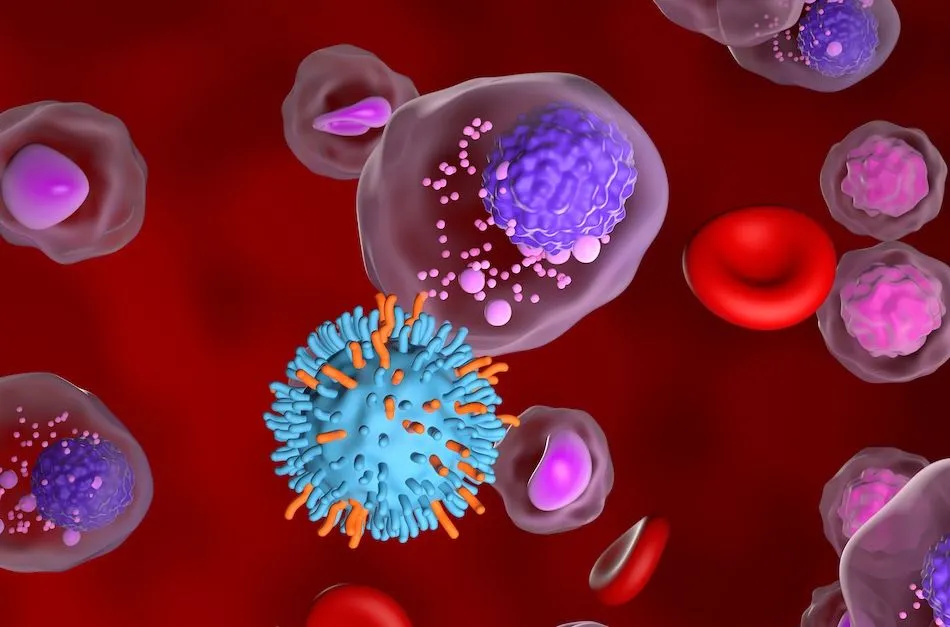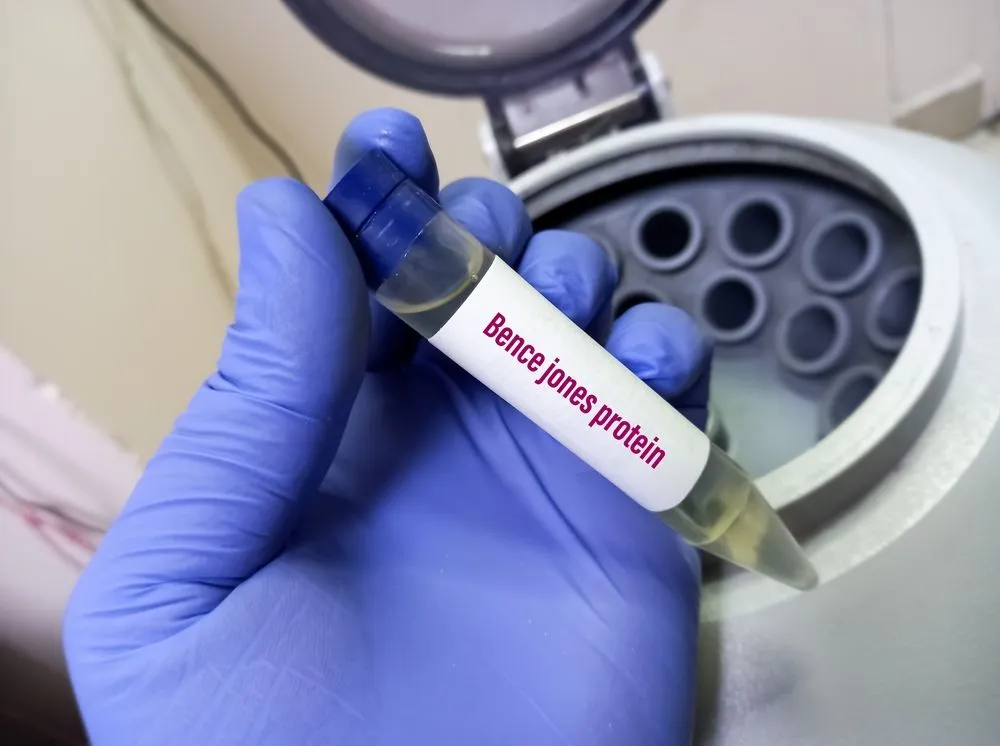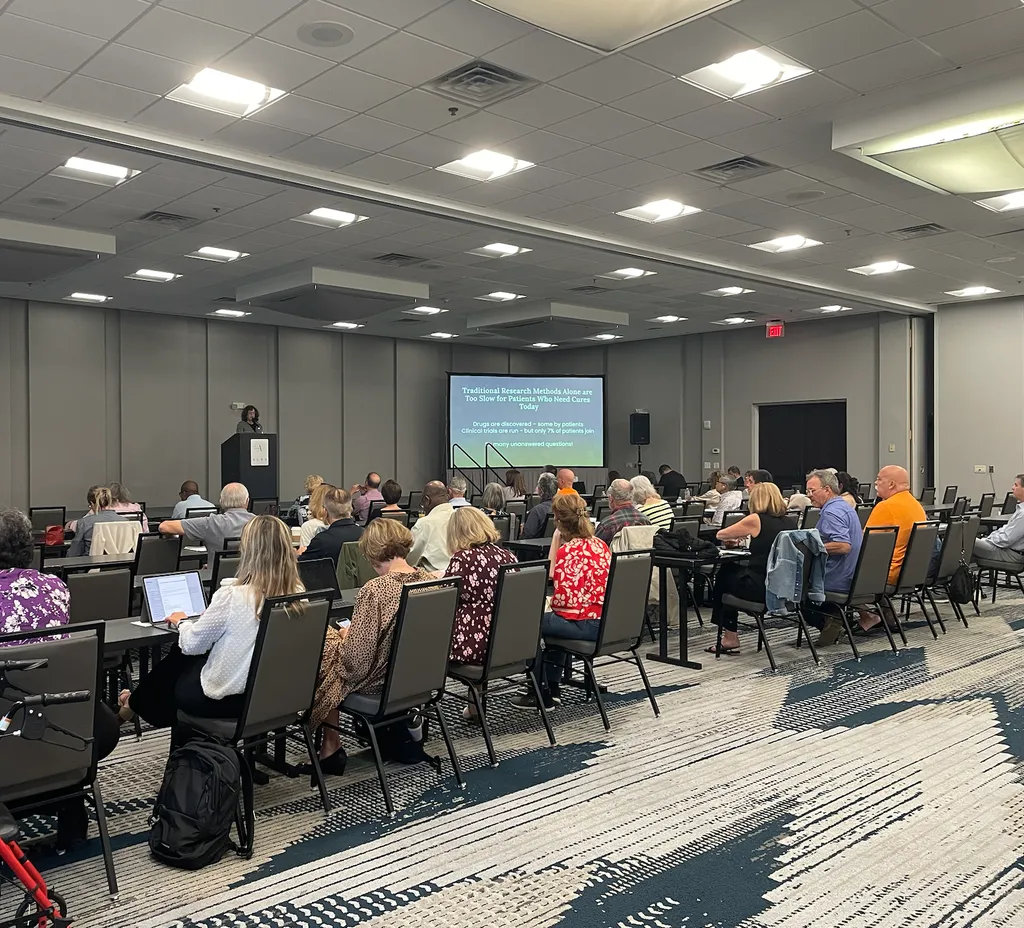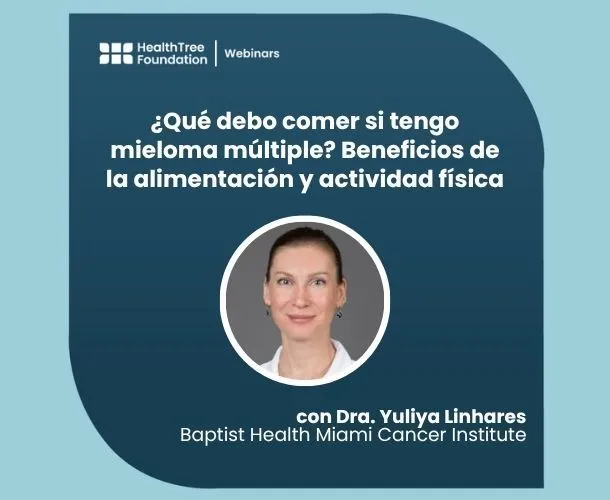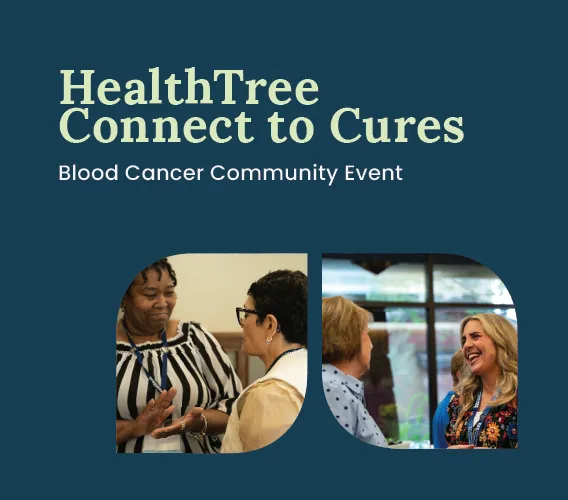Myeloma Round Table: Treating Relapsed/Refractory Disease at MD Anderson — Houston, March 26, 2022 (Part 2)

Although an estimated 80% of myeloma patients never have direct or indirect contact with a specialist, preferably from their initial diagnosis, is may be even more vital for patients with relapsed/refractory disease those one in their corner. Changes in diagnosis and treatment of myeloma are occurring at the fastest rate ever and only specialists have the time and expertise to keep up with it. That’s not a problem at the MD Anderson Cancer Center in Houston, TX, one of the premier myeloma research and treatment facilities in the world.
In Part 2 of this Myeloma Round Table held on March 26, 2022, Dr. Krina Patel, Dr. Hans Lee, and Nurse Practitioner Rebecca Lu explain the considerations they keep in mind when treating relapsed/refractory disease at MD Anderson. They also explain the importance of clinical trials in treatment strategies and demystify the process for patients.
Krina Patel, MD, MSc, MD Anderson Cancer Center, Houston, TX: Being Proactive about Relapsed/Refractory Myeloma
- Relapsed disease means cancer has become active again
- Clinical relapse must have one or more of CRAB criteria
- Increase in size of existing plasmacytomas or bone lesions
- Hypercalcemia >11.5 mg/dl
- Decrease in hemoglobin of more than 2 g/dL
- Rise in serum creatinine by 2 mg/dL or more.
- Biochemical relapse - seen in tests, generally asymptomatic, shows increase of >25% from lowest responses value in any one or more of:
- Serum M protein
- Urine M protein
- Free light chains levels
- Clinical relapse must have one or more of CRAB criteria
- Refractory disease means cancer has stopped responding to treatment and/or progresses within 60 days of last therapy
- Triple-refractory patients are resistant to all 3 classes of standard myeloma therapies
- Penta-refractory means that patients are refractory to 5 classes of drugs
- Goals of treating relapsed/refractory disease
- Preserve your quality of life
- Not every relapse requires immediate therapy
- Why are clinical trials important?
- Key to making progress against cancer
- How do we improve our odds with myeloma?
- Knowing how to choose treatments based on risk/benefit
- Patient-related: age, performance status co-morbidities, social support
- Disease-related: R-ISS staging, marrow burden, CRAB symptoms, genomics
- Treatment-related: response to prior therapy, time to relapse, clinical trial availability, route of administration, toxicity
- Knowing how to choose treatments based on risk/benefit
- Enrolling in clinical trials and having a myeloma specialist on your team will help you improve your odds
Hans Lee, MD Anderson Cancer Center, Houston, TX: Pragmatic Treatment Strategies
- Incredible progress in treating myeloma in the last twenty years
- Classification of myeloma drug treatments:
- Alkylating agents (1950s): cyclophosphamide, melphalan, bendamustine
- Proteasome inhibitors (2006): bortezomib, carfilzomib, ixazomib
- Monoclonal antibodies (2015): daratumamab, isatuximab, elotuzumab
- Antibody drug conjugate (2020): belantamab mafodotin
- Antibody latches to the myeloma cell, internalizes, delivers toxins to the cell and kills it
- Good possibility for elderly/frail patients
- CAR T (2021): ide-cel, cilta-cel
- Patient gets immune cells collected, modified to kill myeloma cells, infused back into the patient
- One-time dose therapy
- XPO1 inhibitor (2019)
- Selinexor
- Bispecific T cell antibody
- Has 2 arms, 1 arm targets immune cells, other targets myeloma cell
- Have strong efficacy and deep response rates
- Myeloma is rarely treated with a single drug, combining drugs is more powerful, treatment can and must be individualized.
- Factors to consider for individualized therapy:
- Disease-related:
- Myeloma biology (standard vs high risk)
- Type of relapse (biochemical vs clinical)
- Duration of response to prior therapy
- Regimen-related:
- Prior drug exposures, drug-specific toxicities, standard of care vs. clinical trials
- Patient-related:
- Preferences and goals, co-morbidities and age, overall health
- New drugs give patients hope
- Important to discuss disadvantages vs advantages with your physician to jointly decide the right treatment for you.
- Be proactive!
- Become a myeloma expert, empower yourself; the future is bright
Rebecca Lu, MSN, RN, FNP-BC, MD Anderson Cancer Center, Houston, TX: Myeloma Nursing at MD Anderson
- A clinical trial is a research study used to determine if a drug is safe and effective
- 4 clinical trial phases:
- I: establishes dose and safety profile of drug
- II: establishes efficacy and further assess the safety
- III: compare treatment with standard of care
- IV: extend safety and activity in the post-marketing scenario to assess long-term use
- Members of clinical trials teams:
- Research team
- Principal investigator: responsible for the conduct of the study
- Study coordinator: implements the study
- Data Coordinator
- Sponsor: a pharmaceutical company that provides funding and protocol
- Auxiliary team
- Research lab
- Institutional review board
- Investigational pharmacy
- Research team
- To enroll:
- Patient is identified or self-identified
- Research team reviews patient’s chart to determine eligibility
- Physician identifies study and discusses with patient
- Research team reaches out to patient to give overview and request permission for financial clearance
- Obtain financial clearance, consent, then screen and enroll
- Who pays?
- Standard of care costs: things that are usually done, routine care: diagnostic testing, treatment are billed to insurance or patient
- Research costs: extra things used in the study, for example extra bone marrow biopsies, can be covered by insurance
- Consent - a document providing details of the study and signed by the patient
- Key considerations:
- Keep team informed
- Reimbursements: keep receipts
- Treatment windows give patients flexibility
- Report toxicities
- Keep a pill diary and return empty pill bottles
- May have more frequent testing (bone marrow biopsies) and more frequent follow-up visits
- Results may take some time
- Median overall survival is better in patients enrolled in frontline studies!
- Discuss this with your medical team, stay informed: www.clinicaltrials.gov
Questions & Answers
- 0:20 - Can antibody drug conjugates can be used as a bridging therapy for CAR T? Are some bridging therapies the help or harm one’s immune system?
- 6:10 - Are there any new trials or treatments targeting 17p deletion?
- 8:20 - Can venetoclax, daratumumab, and dexamethasone be used in combination?
- 12:00 - What is the experience with the GPRC5D targeted immunotherapies?
- 14:54 - Does a non-secretory patient have any hope In getting into a clinical trial?
- 15:35 - What should you do about a patient that is hesitant about not staying on maintenance therapy?
- 18:00 - What is the role of ixazomib as a maintenance therapy?
- 19:34 - Can you comment on a free light chain ratio reading 100 as an indication of progression to active myeloma from smoldering? Is this a controversial marker?
- 22:25 - Could you discuss a stem cell boost to decrease cytopenias so that a patient can become eligible for CAR T procedure?
- 24:54 - Could you discuss patient-reported outcomes and what that means? How does it help research?
- 28:24 - What is diversity equity inclusion and how does it relate to clinical trials?
- 32:30 - A person newly diagnosed with myeloma has indicators of high-risk disease, back fractures, normal kidneys, is 77 years old, and very active. Is he a candidate for stem cell transplant or is he too old?
- 35:54 - Real-world evidence is a big issue for researchers in the future of cancer. Can you explain what it is and can it be used to accelerate research and answer questions regarding sequencing subpopulations and value assessment?
- 39:10 - When you have newly diagnosed patients, how would you present all this information for them? How do you communicate long-term and short-term goals?
- 45:08 - Can you explain the significance of t(11;14)? (Includes discussion of importance of genetic information.)
- 47:00 - For patients concerned about quality of life issues and in long-term maintenance: Are there any breakthroughs or major studies for for quality of life issues like neuropathy, chemobrain, etc?
- 50:55 - How do you balance long-term maintenance in patients who have long-term MRD negativity (MRD-)?
- 55:16 - How often do you see patients that have genetic differences depending on maybe different cells from different locations in the body and how do you approach treatment in a situation like that?
Thanks to our sponsors

Although an estimated 80% of myeloma patients never have direct or indirect contact with a specialist, preferably from their initial diagnosis, is may be even more vital for patients with relapsed/refractory disease those one in their corner. Changes in diagnosis and treatment of myeloma are occurring at the fastest rate ever and only specialists have the time and expertise to keep up with it. That’s not a problem at the MD Anderson Cancer Center in Houston, TX, one of the premier myeloma research and treatment facilities in the world.
In Part 2 of this Myeloma Round Table held on March 26, 2022, Dr. Krina Patel, Dr. Hans Lee, and Nurse Practitioner Rebecca Lu explain the considerations they keep in mind when treating relapsed/refractory disease at MD Anderson. They also explain the importance of clinical trials in treatment strategies and demystify the process for patients.
Krina Patel, MD, MSc, MD Anderson Cancer Center, Houston, TX: Being Proactive about Relapsed/Refractory Myeloma
- Relapsed disease means cancer has become active again
- Clinical relapse must have one or more of CRAB criteria
- Increase in size of existing plasmacytomas or bone lesions
- Hypercalcemia >11.5 mg/dl
- Decrease in hemoglobin of more than 2 g/dL
- Rise in serum creatinine by 2 mg/dL or more.
- Biochemical relapse - seen in tests, generally asymptomatic, shows increase of >25% from lowest responses value in any one or more of:
- Serum M protein
- Urine M protein
- Free light chains levels
- Clinical relapse must have one or more of CRAB criteria
- Refractory disease means cancer has stopped responding to treatment and/or progresses within 60 days of last therapy
- Triple-refractory patients are resistant to all 3 classes of standard myeloma therapies
- Penta-refractory means that patients are refractory to 5 classes of drugs
- Goals of treating relapsed/refractory disease
- Preserve your quality of life
- Not every relapse requires immediate therapy
- Why are clinical trials important?
- Key to making progress against cancer
- How do we improve our odds with myeloma?
- Knowing how to choose treatments based on risk/benefit
- Patient-related: age, performance status co-morbidities, social support
- Disease-related: R-ISS staging, marrow burden, CRAB symptoms, genomics
- Treatment-related: response to prior therapy, time to relapse, clinical trial availability, route of administration, toxicity
- Knowing how to choose treatments based on risk/benefit
- Enrolling in clinical trials and having a myeloma specialist on your team will help you improve your odds
Hans Lee, MD Anderson Cancer Center, Houston, TX: Pragmatic Treatment Strategies
- Incredible progress in treating myeloma in the last twenty years
- Classification of myeloma drug treatments:
- Alkylating agents (1950s): cyclophosphamide, melphalan, bendamustine
- Proteasome inhibitors (2006): bortezomib, carfilzomib, ixazomib
- Monoclonal antibodies (2015): daratumamab, isatuximab, elotuzumab
- Antibody drug conjugate (2020): belantamab mafodotin
- Antibody latches to the myeloma cell, internalizes, delivers toxins to the cell and kills it
- Good possibility for elderly/frail patients
- CAR T (2021): ide-cel, cilta-cel
- Patient gets immune cells collected, modified to kill myeloma cells, infused back into the patient
- One-time dose therapy
- XPO1 inhibitor (2019)
- Selinexor
- Bispecific T cell antibody
- Has 2 arms, 1 arm targets immune cells, other targets myeloma cell
- Have strong efficacy and deep response rates
- Myeloma is rarely treated with a single drug, combining drugs is more powerful, treatment can and must be individualized.
- Factors to consider for individualized therapy:
- Disease-related:
- Myeloma biology (standard vs high risk)
- Type of relapse (biochemical vs clinical)
- Duration of response to prior therapy
- Regimen-related:
- Prior drug exposures, drug-specific toxicities, standard of care vs. clinical trials
- Patient-related:
- Preferences and goals, co-morbidities and age, overall health
- New drugs give patients hope
- Important to discuss disadvantages vs advantages with your physician to jointly decide the right treatment for you.
- Be proactive!
- Become a myeloma expert, empower yourself; the future is bright
Rebecca Lu, MSN, RN, FNP-BC, MD Anderson Cancer Center, Houston, TX: Myeloma Nursing at MD Anderson
- A clinical trial is a research study used to determine if a drug is safe and effective
- 4 clinical trial phases:
- I: establishes dose and safety profile of drug
- II: establishes efficacy and further assess the safety
- III: compare treatment with standard of care
- IV: extend safety and activity in the post-marketing scenario to assess long-term use
- Members of clinical trials teams:
- Research team
- Principal investigator: responsible for the conduct of the study
- Study coordinator: implements the study
- Data Coordinator
- Sponsor: a pharmaceutical company that provides funding and protocol
- Auxiliary team
- Research lab
- Institutional review board
- Investigational pharmacy
- Research team
- To enroll:
- Patient is identified or self-identified
- Research team reviews patient’s chart to determine eligibility
- Physician identifies study and discusses with patient
- Research team reaches out to patient to give overview and request permission for financial clearance
- Obtain financial clearance, consent, then screen and enroll
- Who pays?
- Standard of care costs: things that are usually done, routine care: diagnostic testing, treatment are billed to insurance or patient
- Research costs: extra things used in the study, for example extra bone marrow biopsies, can be covered by insurance
- Consent - a document providing details of the study and signed by the patient
- Key considerations:
- Keep team informed
- Reimbursements: keep receipts
- Treatment windows give patients flexibility
- Report toxicities
- Keep a pill diary and return empty pill bottles
- May have more frequent testing (bone marrow biopsies) and more frequent follow-up visits
- Results may take some time
- Median overall survival is better in patients enrolled in frontline studies!
- Discuss this with your medical team, stay informed: www.clinicaltrials.gov
Questions & Answers
- 0:20 - Can antibody drug conjugates can be used as a bridging therapy for CAR T? Are some bridging therapies the help or harm one’s immune system?
- 6:10 - Are there any new trials or treatments targeting 17p deletion?
- 8:20 - Can venetoclax, daratumumab, and dexamethasone be used in combination?
- 12:00 - What is the experience with the GPRC5D targeted immunotherapies?
- 14:54 - Does a non-secretory patient have any hope In getting into a clinical trial?
- 15:35 - What should you do about a patient that is hesitant about not staying on maintenance therapy?
- 18:00 - What is the role of ixazomib as a maintenance therapy?
- 19:34 - Can you comment on a free light chain ratio reading 100 as an indication of progression to active myeloma from smoldering? Is this a controversial marker?
- 22:25 - Could you discuss a stem cell boost to decrease cytopenias so that a patient can become eligible for CAR T procedure?
- 24:54 - Could you discuss patient-reported outcomes and what that means? How does it help research?
- 28:24 - What is diversity equity inclusion and how does it relate to clinical trials?
- 32:30 - A person newly diagnosed with myeloma has indicators of high-risk disease, back fractures, normal kidneys, is 77 years old, and very active. Is he a candidate for stem cell transplant or is he too old?
- 35:54 - Real-world evidence is a big issue for researchers in the future of cancer. Can you explain what it is and can it be used to accelerate research and answer questions regarding sequencing subpopulations and value assessment?
- 39:10 - When you have newly diagnosed patients, how would you present all this information for them? How do you communicate long-term and short-term goals?
- 45:08 - Can you explain the significance of t(11;14)? (Includes discussion of importance of genetic information.)
- 47:00 - For patients concerned about quality of life issues and in long-term maintenance: Are there any breakthroughs or major studies for for quality of life issues like neuropathy, chemobrain, etc?
- 50:55 - How do you balance long-term maintenance in patients who have long-term MRD negativity (MRD-)?
- 55:16 - How often do you see patients that have genetic differences depending on maybe different cells from different locations in the body and how do you approach treatment in a situation like that?
Thanks to our sponsors


about the author
Andrea Robles
Andrea Robles is an International Medical Graduate, part of Healthtree’s patient navigator staff. She is committed to patient’s global wellness and finding a cure through research. She’s also a wife and mom of 3.
More on HealthTree Programs
Trending Articles




Get the Latest Multiple Myeloma Updates, Delivered to You.
By subscribing to the HealthTree newsletter, you'll receive the latest research, treatment updates, and expert insights to help you navigate your health.
